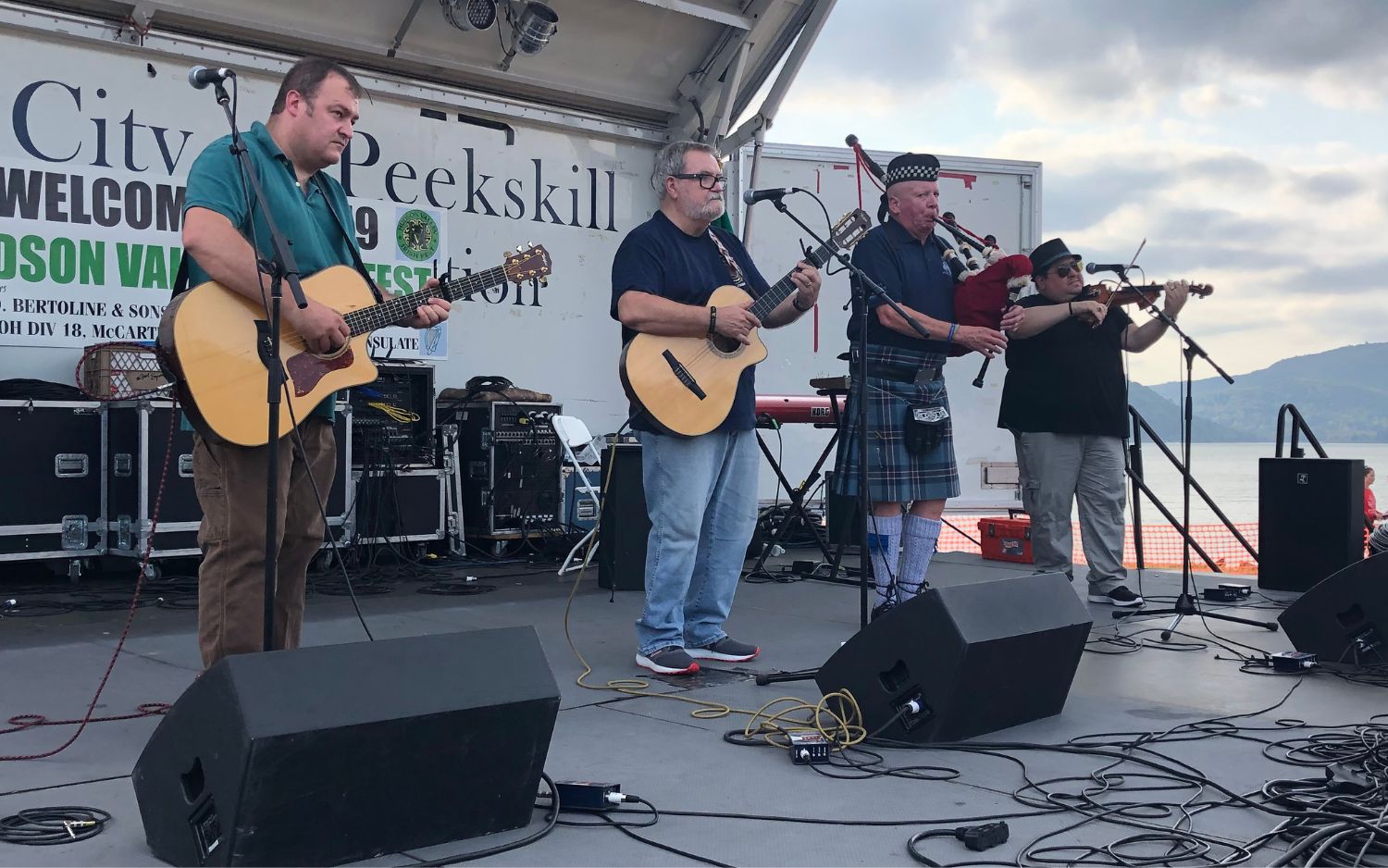What to do when you’re paralyzed and facing a lifetime in bed? Start studying for a cure, which is exactly what Frank Reynolds did. Education and determination brought about his personal miracle, and now through his biotechnology company PixarBio, he wants to help others heal the way he did. Debbie McGoldrick talks to the son of Irish immigrants about his remarkable personal story and the life-changing cures he’s creating.
Frank Reynolds’ mother Anne, an immigrant from Kiltimagh, Co. Mayo, had a keen eye for figuring out who was who every Sunday at Mass in the Kingsbridge section of the Bronx back in the sixties and seventies.
“My mother used to say that when you looked around the church you could tell who the carpenters were, who the doctors were, stuff like that,” Reynolds recalled during a recent interview.
“When I looked around the church after being paralyzed I said to myself, ‘I’m the one who is going to cure paralysis.’ Every day for 23 years I’ve said that and I’m proving it.”
That’s no idle boast from the 54-year-old medical inventor, entrepreneur, philanthropist and forever student who holds six master’s degrees from some of the world’s most elite universities, and cites his unending quest for knowledge as the backbone that literally propped him up when his body failed him after a surgical procedure resulted in paralysis in December of 1992.
Reynolds, founder, CEO and driving force at his Massachusetts-based biotechnology firm PixarBio, was told by a number of experts that he wouldn’t be able to walk again, wouldn’t be able to move again. The diagnosis would likely have been on target with any other patient, but there’s nothing average about Frank Reynolds.
“I became my own doctor,” he says, “and I figured out how to get myself walking and moving again. I spent seven years on my back learning and consuming everything I could. And I did it.”
And as long as there’s a breath in his body, Reynolds is determined to keep on inventing and creating and showing the world that the word “no” should never be an obstacle.
Reynolds didn’t begin his life wanting to cure paralysis and disease. His father Frank Senior was also an immigrant, from Cloone, Co. Leitrim, and his parents met in typical Irish style at a New York dance hall back in the fifties. They had four children, and Frank Senior owned bars and real estate in the Bronx and upper Manhattan.
The family traveled back to Ireland often, and young Frank was a champion stepdancer with a specialty in jigs and reels. “I have the fractured feet to prove it,” he laughs. “I enjoyed Irish dancing a lot and won medals at competitions. And then when I was 13 I put all that behind me because I wanted to play football.”
Frank’s brother John has been epileptic all his life and frequently has grand mal seizures. Frank Senior also didn’t escape illness, suffering from Parkinson’s Disease which was diagnosed when he was only 47, rendering him unable to care for himself or recognize his family for many years.
“It was a nightmare, a horrible disease,” Reynolds recalled. “He used to call me Johnny Carson all the time.”
Reynolds was accepted to the University of Miami for nuclear engineering, but declined the offer to remain with his family and run his father’s businesses. He attended Rider University in New Jersey which he commuted to and earned a bachelor of science, and eventually his first master’s in psychology from Chestnut Hill College in Philadelphia. He was working as a psychotherapist and attending St. Joseph’s University in Philadelphia on December 14, 1992, the day that upended his life forever.
Reynolds was scheduled for surgery on what he thought was a herniated disc. He woke up paralyzed, his body battling a device that was implanted in his spine – one that was rejected by the Food and Drug Administration (FDA) nearly two years earlier. The device had injured or paralyzed some 400 patients before Reynolds and, incredibly, more than 200 after him.
“And then, what was worse, no one was telling me that there was an illegal device,” Reynolds said.
He remembers tuning in to an episode of 20/20 on ABC and a segment by Barbara Walters on spinal surgeries gone wrong. Reynolds soon realized he was watching a show about himself and what he had already endured.
“I called the doctor who was on the report, and I called ABC, and I spoke to the lawyer who was also on the segment. And I signed on with him,” Reynolds recalled.
The litigation, a “nightmare” experience says Reynolds, was eventually successful. The FDA pulled the device off the market in July of 1994. As it turns out, it had been approved for use in the hip, but physicians were also implanting it for spinal procedures. Reynolds contacted the consumer affairs advocate Ralph Nader, and together they worked to ensure that the device was never misused again.
All the while, Reynolds’ mobility was virtually non-existent. Because of the litigation doctors were reluctant to take him on as a patient, he recalls, “so I became my own doctor, lying on my back, in bed in my parents’ house.”
St. Joseph’s University faculty members eventually reached out, wondering why he had dropped his master’s course. He informed them of his changed circumstances and said he wouldn’t be back, but they wouldn’t take no for an answer.
“They said they would do whatever it took to help me graduate,” says Reynolds. “I said that what I needed most was a medical miracle, and they said they had access to medical libraries through library loan programs.”
School and studies had always come relatively easy to Reynolds. He came up with a plan, fully supported by St. Joe’s and Chestnut Hill: acquire as many medical books and journals as possible through their libraries and others, hone in on spinal cord injury research, and study, study, study.
“It’s not like I had anything else to do,” says Reynolds. “I read and absorbed every single thing I could during the seven years I was on my back.”
The movie Lorenzo’s Oil also inspired him. Based on the true story of two parents without any medical background who fought tooth and nail to find a cure for their son’s ALD, Reynolds took heart in the film’s message of sheer grit and determination.
Soon after his botched surgery Reynolds had some movement in his legs. His arms functioned normally. But he could not roll his body or move in his bed. He went home in a brace from his knee to his neck, and the only thing he could consistently do for the seven years he was immobilized was go to the bathroom. Pain was (and still is) a constant.
“I did a lot of research on spinal cord injuries and read that there had never been real advancement, and I couldn’t believe it,” Reynolds said.
“The field only took root after the world wars when soldiers came back and that’s when we started studying it, but nobody had ever made progress. I thought that was crazy.”
Reynolds knew that he could neuro-stimulate his spinal cord through movement, so he used a treadmill and held on with a firm grip, pushing and pushing his body to respond. He made slow but gradual progress, walking a mile a day after six months and five miles per day after a year, but only on a treadmill. Streets and sidewalks, uneven as they are, posed problems that persist to this day, and stairs or an incline were impossible.
But there was no stopping Reynolds. When he wasn’t working his body to the max, he was tending to business.
“I had friends say to me that they were worried about their jobs, that maybe they’d get fired, and I’d keep thinking that they were lucky to have jobs. I didn’t have anything,” Reynolds says.
He set about changing his luck. He finished his second master’s in St. Joseph’s and started a consulting firm, Expand the Knowledge, while attending therapy at McGee Rehabilitation Hospital in Philadelphia. Job hunting wasn’t easy but he landed a position at Xerox thanks to Expand the Knowledge, which he continued to grow with the blessing of his new employer.
Furthering his education was also a top priority during this time. From the years 2000-2006 Reynolds earned an astounding four master’s degrees in various disciplines from Temple University, the University of Pennsylvania, the Wharton School and MIT, where he was a member of the prestigious Sloan Fellows Program. (If that wasn’t enough, Reynolds also earned a 2006 certificate from Harvard Medical School’s MeRIT Program for Managing Clinical Trials.)
His time at MIT came after he left Xerox for Siemens, the vast multi-national engineering company with interests in automation, healthcare and many other technologies. Siemens was hugely bullish on its new recruit, so much so that the company paid for Reynolds to attend MIT.
Reynolds absorbed everything he could at one of the world’s most renowned institutions of higher learning, but not in the way Siemens would have preferred. A meeting with Dr. Robert Langer, a celebrated chemical engineer who runs the largest biomedical engineering lab in the world at MIT and holds hundreds of patents, was yet another transformative experience in the life of Frank Reynolds.
Though Reynolds excelled at Siemens, rising to director of global business development, the opportunity to work with Langer on creating a cure for paralysis was too good to pass up.
“I told him about my cure and he thought it could work,” Reynolds says. “I was so inspired by him. It was such an opportunity. He’s one of the most compassionate, wonderful men I have ever met who always wants to help people and encourage people.”
Reynolds founded his first biotechnology and research company, InVivo Therapeutics, in November of 2005. And it was there that he invented what’s known as NeuroScaffold, the first product to show therapeutic effects in humans after a spinal cord injury. It’s awaiting FDA approval, and it’s a product that Reynolds, for obvious reasons, is enormously proud of.
“I invented NeuroScaffold myself and even paid the patent lawyers myself,” Reynolds says. “And it’s working. Seven out of the first eight humans in trial reported functional recovery. It worked 100 percent in monkeys.”
The product is based on early intervention, protecting the traumatized spinal cord immediately after the injury instead of waiting – Reynolds says that in 90 percent of patients, it can take up to 21 days after the trauma for paralysis to fully take root.
“The scarring continues to advance the longer you wait to treat it, and in many patients they scar fully and have no chance of recovery. Now the rest of the world is saying, ‘We’re going to use stem cells on all those people scarred,’ and I’m saying, ‘Why let them scar to begin with? Why don’t we minimize the scar and then add stem cells to what’s left?’”
Reynolds left InVivo Therapeutics in 2013, and though he holds the NeuroScaffold patent InVivo will shepherd it through the FDA approval process which he expects could take four years.
Pain management, not surprisingly, has been a hallmark of Reynolds’ life. He founded his current biotechnology company, PixarBio, in August of 2013 with Langer, who calls Reynolds “the Steve Jobs of life sciences,” hence the Pixar name after the animation studio that Jobs used to run.
PixarBio’s signature product to date, the one that the company believes will transform lives in myriad ways, is NeuroRelease, an injectible pain management drug that is non-addictive and designed to serve as a replacement for morphine and other opiates.
“It’s not just that it’s a morphine replacement and it’s not addictive. NeuroRelease doesn’t affect locomotion either which is so important,” Reynolds says.
According to PixarBio, which employs more than 50 and was named by Boston Business Journal as one of the best places to work in 2016, FDA approval for NeuroRelease will first be for a 14-day post-surgical pain treatment. It is expected in late 2018.
“It’s an injectible and it’s a sprinkle-on,” says Reynolds. “We have a three-day sprinkle for soldiers which the Pentagon asked me to make, and I did. So soldiers in the battlefield won’t have to get an injection of morphine. They can sprinkle the product on.”
Last month, PixarBio’s stock was upgraded to the OTCQX Marketplace which trades several other Big Pharma companies. The company also just completed an offering that totaled $23.4 million which will be used to continue the advances already made with NeuroRelease.
“We’re very, very excited about NeuroRelease, especially given the problems of addiction we have in this country,” says Reynolds.
Resting on his laurels – or resting at all, it seems – is definitely not part of Reynolds’ grand plan. Given his family history, he’s intent on making breakthroughs in epilepsy and Parkinson’s Disease research.
PixarBio is working on developing sustained delivery of the vital brain chemical dopamine over time; a lack of dopamine is one of the main causes of Parkinson’s.
Reynolds is also developing an injectible anti-epileptic drug to treat severe cases of the disease which aims to limit the necessity for resections of the brain – commonly known as lobotomies – particularly in children.
Day to day life for Reynolds presents multiple challenges, especially in cold weather when the stainless steel screws in his back freeze and the sensation can sometimes be unbearable. Soothing the pain with opiates has never, ever been an option for him, he says.
“After my surgery I woke up on morphine and I immediately flashed to my patients as I was a psychotherapist at the time and some were drug addicts. I was on morphine for 10 days and that’s it. I had to get off it,” he recalls.
The old-fashioned way works just fine to salve Reynolds’ ills, he says. “I rarely take pills. I just get creative,” he offers.
Ice can work wonders, and he says heated car seats are his best friends. “I’ve got them in my car. You lay in a heated seat and you get great therapy. Especially in New York, where I can’t walk around at all. I have to be driven everywhere.”
Sleep is especially elusive; Reynolds functions on about three hours a night. When he’s standing he’s rarely still. Constant movement helps the joints feel better.
Another remedy that’s proven invaluable to Reynolds is a personal one. It happened in 2010, when he met a woman called Mary Lynch in New York on the night then-Irish President Mary McAleese awarded Reynolds with an Irish Life Science 50 Award.
Mary tells a funny story of meeting her husband-to-be that night, not believing that he was feted by the Irish president. A green flower and Irish passport that he proudly displayed convinced her otherwise. The couple married in August of 2015, and together they raise three children, Margaret, Lauren and Anthony.
In a textbook case of truth being stranger than fiction, Lauren suffered a catastrophic injury on a trampoline on New Year’s Eve 2013 that rendered her quadriplegic. She was visiting her father in Los Angeles, and she was only 12 years old.
Mary says that Frank directed Lauren’s recovery plan, even though the chief of neuro-surgery at the hospital where Lauren was being treated said her chances of regaining mobility were zero.
Frank Reynolds doesn’t know what zero means when it comes to recovery. During 2014 Lauren eventually gained back wrist and ankle movement, and then began to walk again, “though she still can’t open a water bottle,” Reynolds says. Her mother’s gratitude is boundless.
So it goes with the son of Irish immigrants who every day turns tragedy into triumph. And education, he says, remains the key to his success.
“Education has given me credibility, and that’s very important in the field of science,” says Reynolds.
“You know, you have to get educated. I learned most of what I do today in bed without the credentials, but if I didn’t have the credentials I now have they wouldn’t have even let me in the room.
“And today, whatever credentials you get in science, other people will attack them. They’ll say, ‘You have six master’s degrees, but you don’t have a doctorate.’ And I say that today, in order to cure disease, you need multi-disciplines.
“And I always say, innovation never ends no matter what. Sometimes it’s about creating new, and sometimes it’s about using technology to see what’s already there. We’ve got to keep looking at all of it, all of the time.”




Comments